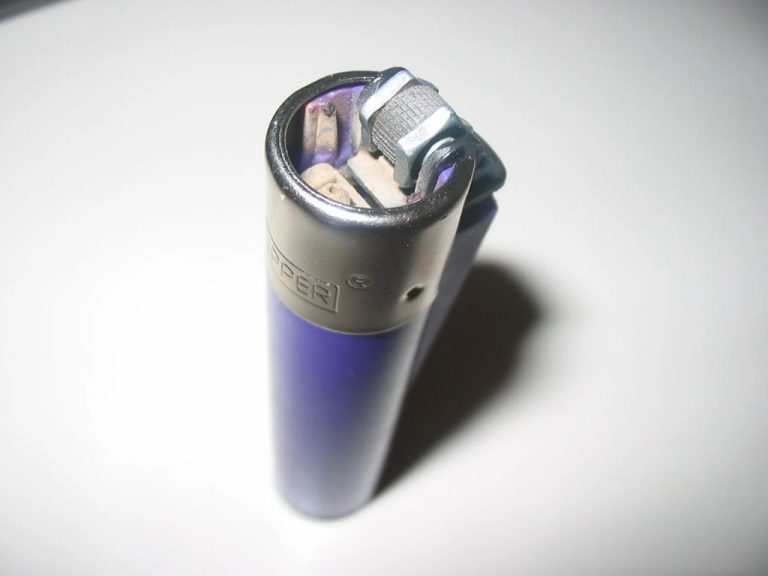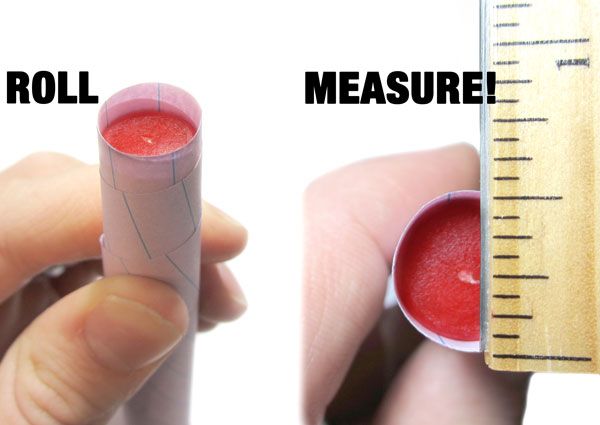Are Candles In Glass Recyclable?
There is a lot of confusion regarding whether or not candles in glass containers are recyclable. On one hand, most candles are made of paraffin wax which can generally be recycled. On the other hand, glass containers are widely accepted for recycling. This leads many people to assume that a candle in a glass jar can simply be tossed into the recycling bin. However, the answer is not so straightforward.
Recycling facilities have specific requirements for handling wax and glass that determine whether these materials can be properly sorted and recycled. Most curbside programs cannot accommodate candles that combine wax and glass into a single item. Understanding what makes candles in glass jars challenging to recycle can help consumers make better decisions about repurposing and disposing of them.
Candle Wax
There are three main types of wax commonly used to make candles: paraffin, soy, and beeswax. Each type of wax has different properties that affect how the candle burns.
Paraffin wax is a petroleum byproduct made from crude oil. It’s the most widely used candle wax due to its low cost and ability to hold fragrance. Paraffin wax candles burn slowly and evenly while releasing a bright flame. However, paraffin wax produces more soot than natural waxes when burned.
Soy wax is made from hydrogenated soybean oil. It’s a clean-burning, renewable and biodegradable wax. Soy wax melts at a lower temperature than paraffin, so soy candles must be burned in containers with small diameters. Soy wax doesn’t hold scents as well as paraffin.
Beeswax is a natural wax made by honey bees. It has a sweet, honey-like scent when burned. Beeswax candles burn brighter and longer compared to other waxes. However, beeswax is expensive and difficult to work with, requiring higher temperatures to melt the wax during candle making.
Glass Containers
Candle manufacturers use different types of glass to create containers and jars for their products. The most common types of glass used are:
Soda-Lime Glass – This economical type of glass makes up about 90% of glass containers used for candles. It’s made from sand along with soda ash and limestone as additives. Soda-lime glass is lightweight, durable, and easy to form into different shapes like cylinders, jars and votives.
Borosilicate Glass – Borosilicate glass contains boron trioxide, which makes it more resistant to temperature changes and less prone to thermal shock. This type of glass is used for some high-end candle containers, especially hand-blown glass. It provides enhanced clarity and heat resistance.
Low-Iron Glass – Also called crystal glass, low-iron glass contains minimal iron, resulting in enhanced clarity and a brighter, crisp white color. This ultra clear glass is popular for luxury candles in upscale containers where appearance is paramount.
Knowing the type of glass is useful when determining if a candle container can be recycled. The glass composition impacts the optimal recycling process and end use options.
Recycling Facilities
When it comes to recycling candles in glass containers, the ability of local recycling facilities to properly process these materials is an important consideration. Wax and glass require different handling to be recycled.
Many curbside recycling programs cannot accept candle wax because it can contaminate other recyclables when melted. Specialty recycling facilities are equipped to separate and store wax for recycling. These facilities have tanks and processes to melt down the wax and filter out any impurities.
For the glass container, most municipal recycling programs can accept and recycle glass jars, bottles, and other containers. Glass is separated from other recyclables and crushed into cullet – small glass pieces. Cullet is then melted down and made into new glass products.
When preparing candles for recycling, you’ll want to check with your local recycling program about their ability to handle wax and glass. If they cannot process wax, seek out a specialty recycling facility capable of properly recycling both components. Proper recycling starts with an understanding of what recycling facilities can handle.
Preparing Candles for Recycling
Before recycling candles, it’s important to properly prepare them so the materials can be effectively separated and recycled. Here are some steps to take:
Remove the wick: The wick is typically made of cotton or paper and cannot be recycled with the wax or glass. Use scissors or pliers to fully remove the wick before recycling.
Wipe out excess wax: As much remaining wax as possible should be removed before recycling the glass container. Allow the candle to fully burn until just a wax pool remains. Once cooled, use a paper towel to wipe out the remaining wax residue.
Separate materials: Keep the glass container and leftover hardened wax separate. The wax can go in with cooking oil recyclables while the glass jar should be recycled with other glass. Do not put them together in the recycling bin.
Clean container: Give the empty glass container a wash with soap and water to remove any remaining wax residue or candle scent. This prevents contaminating the glass recycling stream.
Remove labels: Peel off any paper labels adhered to the glass as these cannot be recycled with the glass itself. The label backing can go in the regular trash.
Wax Recycling
The wax from used candles can often be recycled, depending on the wax composition. Paraffin and soy wax, two common candle waxes, are able to be reprocessed and reused in new candle making.
Recycled paraffin wax can be cleaned, filtered, and blended with virgin wax to make new candles. The recycled wax provides cost savings and reduces the environmental impact compared to using 100% new paraffin wax. However, paraffin is a petroleum-based product, so recycling alone does not make it a sustainable option.
Soy wax, made from soybeans, is a renewable and biodegradable material. Recycled soy wax can be combined with some amount of new soy wax and reused for candle making. The recycled wax cuts down on waste while maintaining a high quality, clean-burning candle.
Beeswax, a natural wax, can also be recycled, but often requires more filtering to remove impurities. The reused beeswax can produce excellent quality candles again.
In summary, the most common candle waxes, including paraffin, soy, and beeswax, are able to be recycled and reused in new candle production. Proper recycling and reuse of candle wax decreases waste and environmental impact.
Glass Recycling
Recycling glass is an important way to reduce waste and conserve resources. The glass used in candle containers, like jars and votives, is typically soda-lime glass which is relatively easy to recycle. The glass recycling process starts by collecting used glass containers from recycling bins and taking them to a materials recovery facility. Here the glass is sorted by color and cleaned to remove contaminants. The sorted glass is then crushed into cullet, small glass fragments and particles.
The cullet is taken to a glass manufacturing plant and combined with sand, soda ash and limestone. It is heated to about 2800°F to melt it into a molten state. Impurities are removed and the molten glass is formed into new products. Adding cullet to the manufacturing process reduces the amount of raw materials and energy needed. Typically, glass can be recycled endlessly without loss in quality or purity.
Recycled glass from candle containers can be made into a wide range of useful products. Common uses for recycled glass cullet include new glass containers, fiberglass insulation, abrasives, road aggregate and even bead blasting media. So by properly recycling your used candle jars and votives, they can gain another life in many useful forms instead of taking up space in a landfill.
Alternatives
While recycling is a good approach, reusing and repurposing materials is even better for the environment. Here are some creative ways to give your finished candles and glass jars a second life:
Repurpose the Glass Jars
Clean out used glass jars thoroughly and reuse them for food storage. Jars make great containers for dried goods, snacks, sauces, and more. You can also upcycle them into organizers for Q-tips, cotton balls, and other items around the house. Turn jars into cute little vases for fresh or faux flowers. For a fun craft, decorate them to use as night lights or to hold greeting cards and notes.
Make New Candles
Gather candle wax leftovers from nearly-finished candles and melt them down to make new candles. There are kits available to make votives, tarts, and other candle shapes from recycled wax. Get creative with adding colors and scents too. Making DIY candles is an enjoyable hobby that reduces waste.
Use for Home Repairs and Crafts
Melted candle wax has great uses beyond just making more candles. Seal envelopes with a candle wax seal or use it as an adhesive for minor home repairs. Make old-fashioned wax food wraps to replace plastic wrap. For crafty fun, dip objects in colored wax to decorate them or make wax paper for art projects.
Recommendations for Recycling Candles in Glass Containers
When it comes to recycling candles in glass containers, it’s important to follow some best practices to ensure the materials get properly recycled.
First, make sure to separate the wax from the glass container. The wax can go in your regular recycling bin, while the glass jar should go in your glass recycling container. To remove leftover wax, freeze the candle overnight and then peel away the wax from the glass.
Another tip is to find out what your local recycling facility accepts. Some will recycle candles and glass together, while others require them to be separated. Calling your local recycling center can provide guidance on their specific process.
Additionally, clean all materials thoroughly before recycling. Remove any labels, residue, or leftover wax from the glass jar. Waxed paper covering the candle can be recycled with paper goods. For the wax, let it fully harden before placing it in your recycling bin.
Lastly, if able, aim to buy candles packaged in glass that can be recycled. Mason jars and other reusable glass containers are ideal. Avoid candles in metal tins or plastic holders which may not be accepted for recycling in your area. Seek out soy, beeswax, or other natural waxes when possible.
Following these best practices will help ensure that your used candles and glass containers get properly recycled rather than ending up in the trash.
Conclusion
Candles in glass are generally recyclable, but there are some key things to keep in mind. The wax and glass need to be separated before recycling. The wax can often be recycled through municipal curbside recycling programs if solidified and packaged properly. The glass jars, once cleaned of wax, can also go in single-stream recycling bins in most areas. However, the lids may need to be removed depending on the material. Recycling facilities use different processes to sort, clean, and melt down these materials for reuse in new products.
To make recycling easier, look for soy or beeswax candles that are easier to clean and prepare for recycling. When possible, reuse your glass containers for other purposes before recycling. Candle enthusiasts can also explore wax melt options that don’t require any glass container at all. With some simple preparation, we can keep these common candle materials out of the landfill.
The key points are that candles in glass are recyclable, but require separation of materials first. Check local guidelines, clean thoroughly, and recycle properly for optimal reuse of these materials.


